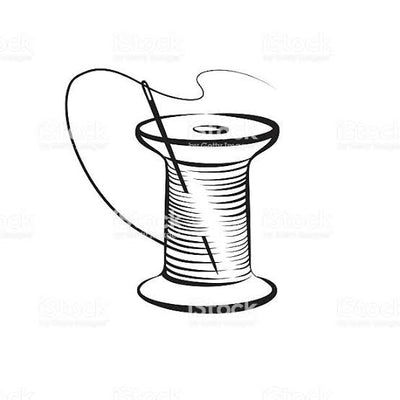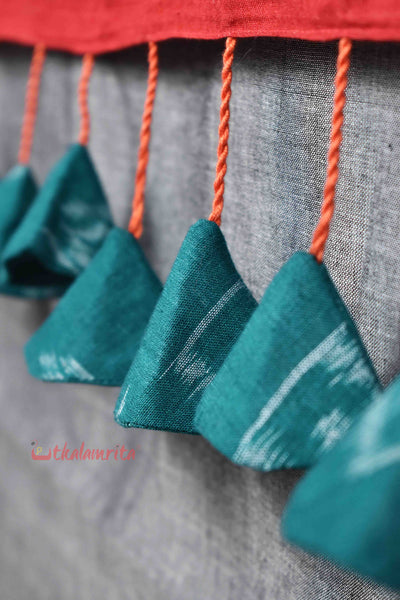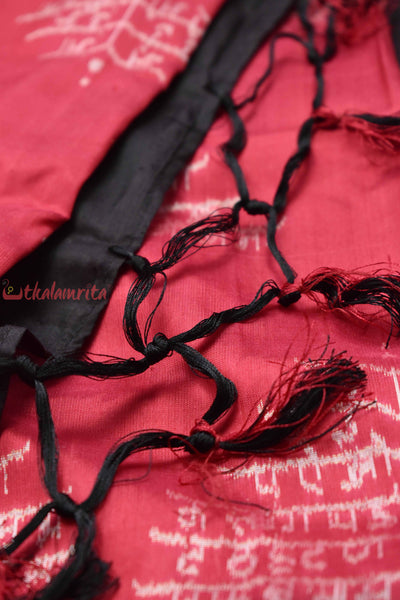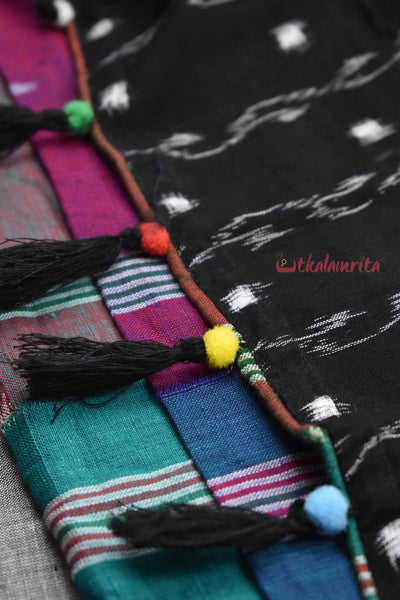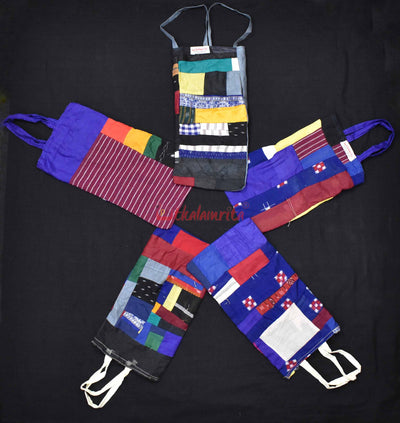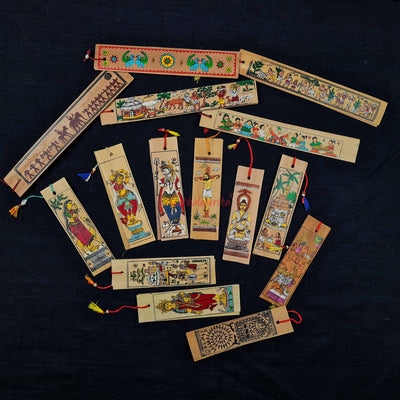







Aswini Black Border Cotton Saree
Sambalpuri Bandha Saree & Fabrics from GI (Geographical Indications) document- Tie & Dye weaving in western Odisha came into existence during 600 BC. Traditional handwoven ikat or baandha: One of warp/weft tied and dyed pre-weaving (single ikat); both warp and weft tie-dyed before weaving (double ikat). Weavers are distributed in Bargarh, Boudh, Sonepur, Bolangir, Nuapada & Sambalpur & some parts of Dhenkanal, Kalahandi, Sundargarh, Jharsuguda districts where Meher community reside. For weaving traditional pit loom with throw/fly shuttle technique is used. Varieties are Sonepuri, Pasapali, Bomkai, Sachipar, Bichitrapuri and Bapta (Cotton & Silk mixed) sarees.’Pasapalli’ saree is amongst the most beautiful sambalpuri sarees. Pasa refers to the ancient game of chess played since Mahabharat times where the dice rolling set on course the fate of the players. The checkerboard pattern is double ikat- meaning both warp and weft are tied and dyed before weaving. That’s why it’s classy and timeless- coz the colors reinforce on each other, making the colors stand out on those checks! This saree’s traditional name is aswini- it is characterised by multicolored tic-tac-toe type boxes inside predefined running square lines. The anchal has beautiful flower ikat.
Anchal and Border design may change form loom to loom.

